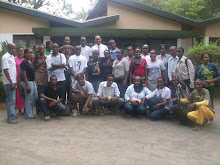A study conducted in Kilimanjaro reported that deforestation in the foothills of Kilimanjaro has steadily diminished cloud and mist cover on the mountain, which in turn has tended reduced general humidity, directly affecting the health of the glaciers. Evidently the mountain deserve particular attention; the glacier is projected to disappear by 2015-2020 following intensive climate catastrophes which are in large part because of human activities, indeed if greenhouse gas emissions, the leading cause of climate change continues the global temperature will increase to 5.8˚C by the end of the 21st century.
There are environmental problems identified so far like land degradation, inadequate water supply, pollution, habitat fragmentation and loss of biodiversity, deterioration of aquatic systems deforestation and frequent forest fire.
The global warming associated with green house gas emission coupled with the later environmental problems yield effects including; reduced rainfall which compromise water flows leading to water scarcity for agriculture, biodiversity survivor and energy production. The other effect is temperature elevation which disrupts the ecological balance for example it favors malaria vector survival associated with malaria epidemics in Kilimanjaro, a new phenomenon in the region but again endanger other temperature sensitive species.
Climate change is now a global issue posing challenges to the very survival of mankind and sustainable development. It is a systematic change in the key dimensions of climate. Climate change is real and is happening, beyond the traditionally held categorization of climate change problems as environmental issue, it is clearly a development issue with a direct impact on poverty reduction strategies, food security, economic growth, health, human rights, governance and equity.
Thus from the ecological perspective the residents in the region are trying to defend their survivor cheaply through encroachment of the park, illegal logging, opting for unsustainable conventional or traditional shifting agriculture, wildfire for charcoal and honey collection, surprisingly its said, there are those who burn so as in turn get employed in breaking off the fire due to life hardship. All of these form a viscous cycle of destruction to natural resources.
Mount Kilimanjaro, the highest one in Africa with an altitude of 5895m above sea level is found in the Northern Tanzania and it’s among the potential National Park in contributing to the national economy. The park was designated as the World Heritage site by UNESCO in 1987.
Beatrice Benjamin
bbn_83@yahoo.com
Saturday, July 4, 2009
Subscribe to:
Post Comments (Atom)


No comments:
Post a Comment